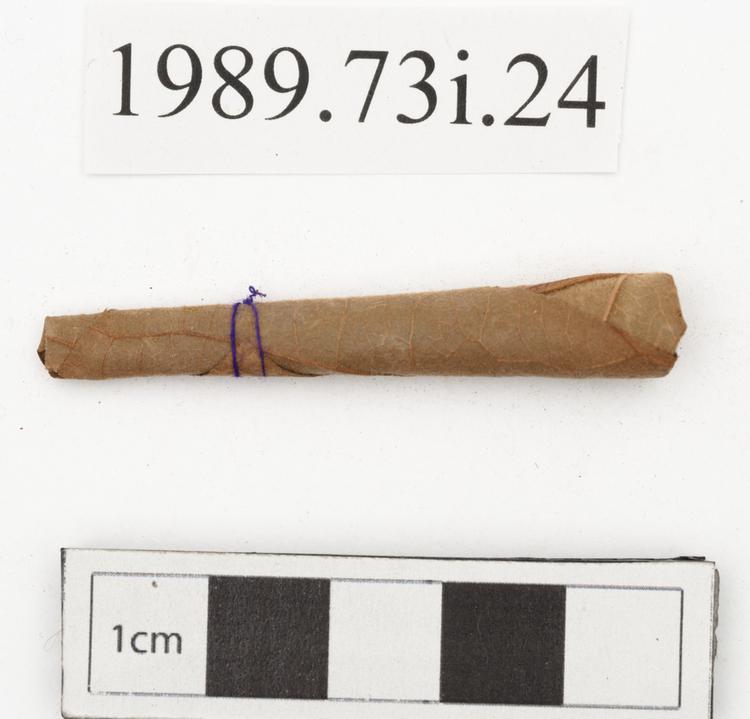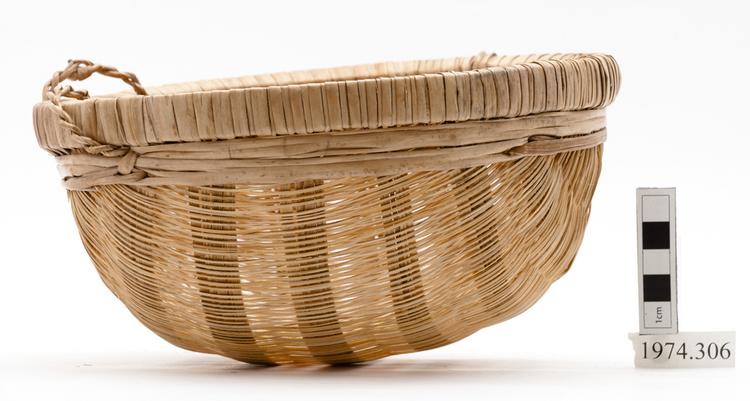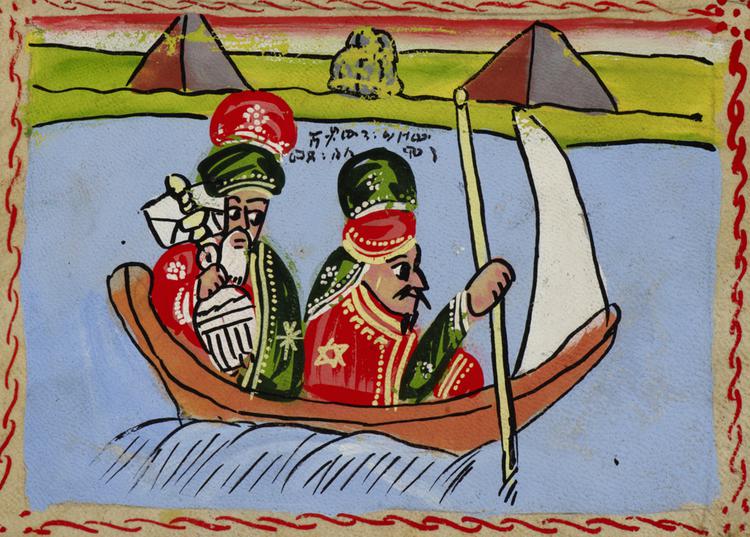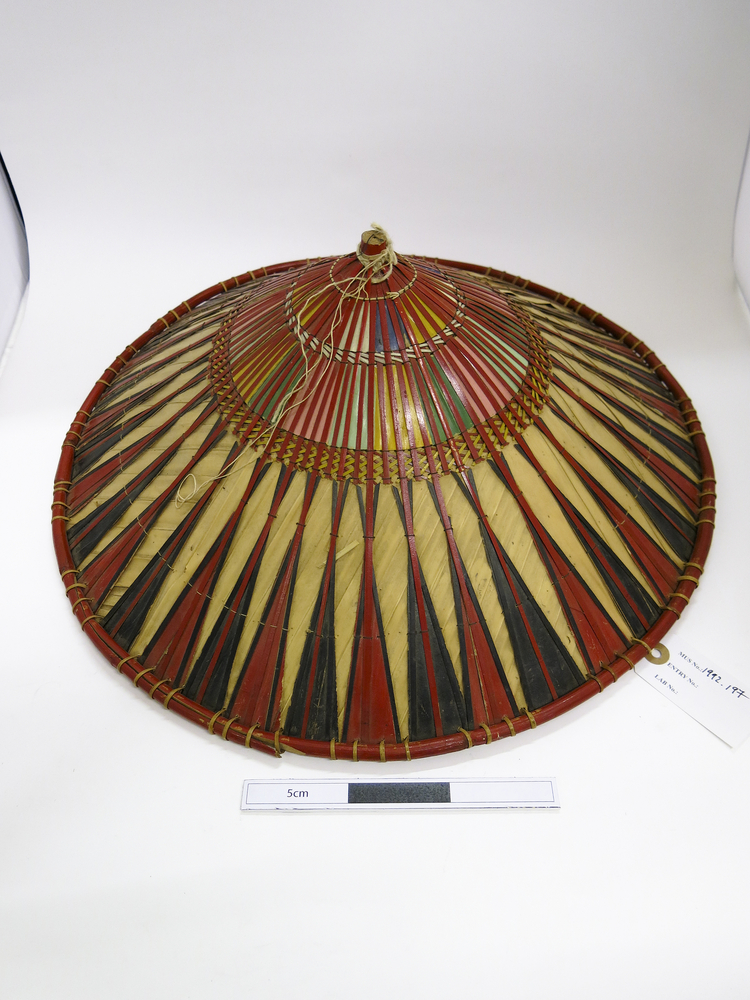

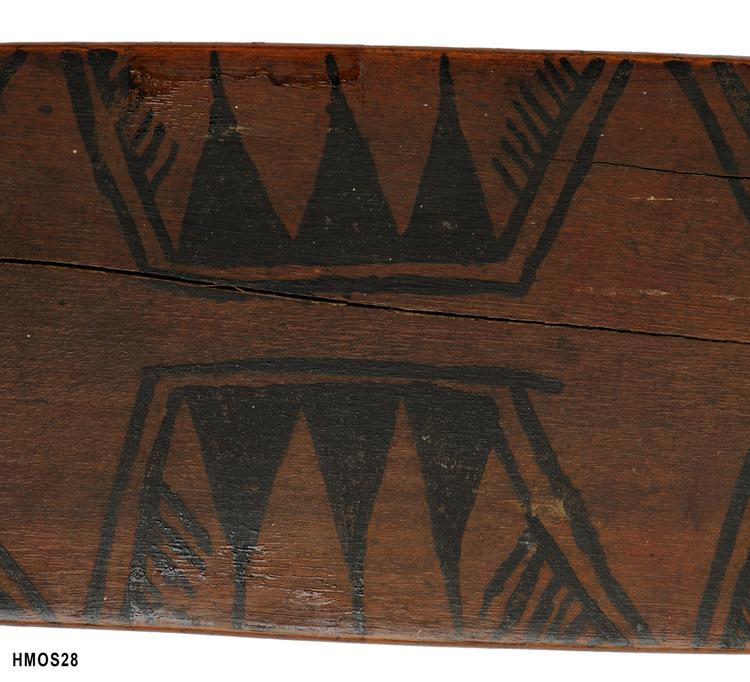
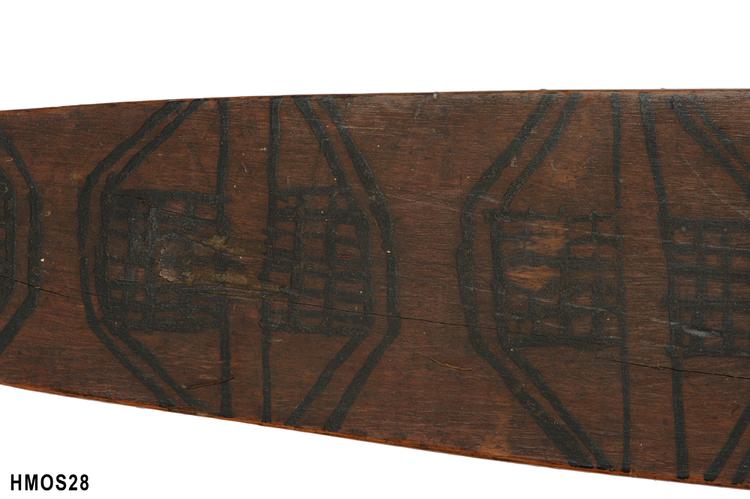
"Club (Santa Cruz Is. W. Pacific) Boat-shaped head. All wood, Decor, painted [illegible]" [Acc Reg]
Dance Club, Santa Cruz Group, TeMotu Province, Solomon Islands, Central Melanesia An important possession that every Santa Cruz chief took great pride in was his nava dancing ground. Kept immaculately weed-free and defined by a kerb of white coral slabs, it was here that his menfolk gathered to practice and perform their communal stamping dances. For the Santa Cruz islanders, the perfection synchronisation of the men’s stamping and movements was the best gauge of the dance’s performance. To keep time and achieve this perfect synchronisation, the dancing was accompanied by a light and quiet bamboo slit drum, reminiscent of the rolled-mat drums also played for dancing in parts of Western Polynesia. Many of the Santa Cruz islanders were of recent Polynesian (rather than very ancient Melanesian) ancestry, and several of these points mirror the culture of dance further east. And so it is with this fine dance club. Club dances were a key part of male dance throughout Polynesia, and the style of this club embodies three strong masculine qualities through its distinctive and symbolic form. First, the club represents a boat, which refers to the importance of fishing (particularly for bonito) as a male activity. Second, the upraised bow and stern are highly abstracted human faces, mirroring club forms throughout Polynesia: a good club was believed to contain a spirit that assisted the warrior in his fighting. Thirdly, if we turn the club over, the pointed end of this particular example is also painted to represent a Frigatebird (Fregata spp.), which is a rapacious fish hunter that was an important symbol of successful fishing, warfare and chieflyness in many parts of the Pacific. Wood, pigment, vegetable fibre. Provenance unknown.
fighting



